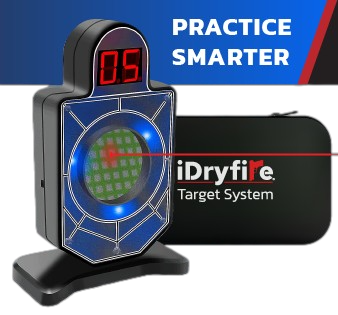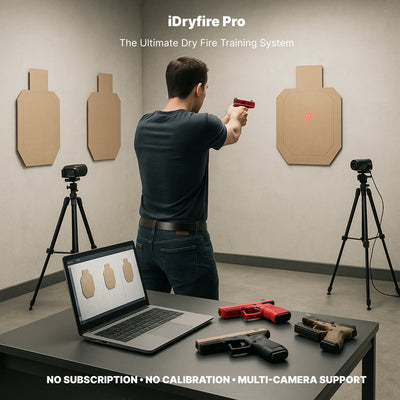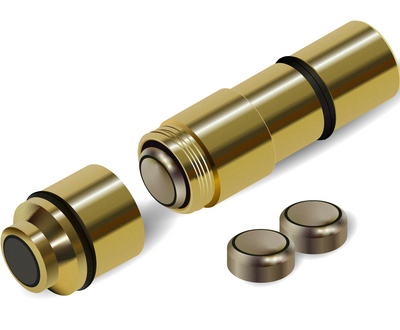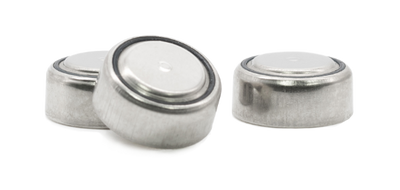Top 5 techniques to improve firearm shooting accuracy
Shooting accuracy is an important part of every professional shooter's arsenal. It can be the difference between a win and a loss, or even life and death. But shooting with accuracy takes practice, and there are some simple techniques you can use to improve your aim.
Section 1: Focus on your target
Section 2: Dry training
Section 3: Trigger Control
Section 4: Natural point of aim
Section 5: Follow Through
Sight alignment
Sight alignment is one of the most important elements in shooting a firearm. If your sight alignment is off, it can cause you to miss your target completely.
You should check to make sure that:
- The front and rear sights are aligned with each other.
- The front and rear sights are aligned with the barrel.
- Your eye remains on target throughout the shot.

Dry fire training
Dry fire training is a great way to improve your shooting accuracy, and it's something that you can do at home or on the range. If you don't have a laser sight, you can still do dry fire training by using a wall or mirror as a target.
To achieve this, begin by holding an unloaded gun with both hands at arm’s length in front of your eyes at eye level. Now use one hand to pull back on the hammer while keeping your sights trained on a point 45 feet ahead of you; then release only after completing all necessary safety checks before beginning again with another round of dry firing until finished!
Dry firing doesn't have to be tedious. Check out Clip-n-Shoot for an easy and safe way to turn your phone into an interactive dry fire target.
Trigger technique
- Position your finger properly. In other words, rest it on the trigger without squeezing it or pulling it backward (if you're right-handed).
- Pull the trigger smoothly and deliberately with the pad of your index finger positioned along its length. You may want to practice this motion without ammunition or before shooting live rounds if you feel uneasy about doing so during training.
- Release the trigger smoothly until it resets itself into place, which will happen automatically when you pull it again later in this process.
You've heard this one before, but it's worth repeating: pull the trigger straight back. If you jerk it or pull in an upward motion ("the string method"), you'll be more likely to miss your target. Instead, use your finger pad and keep a steady hand.
If you're having trouble hitting your target, try adjusting your grip. A bad grip can cause all sorts of problems—from missed shots to sore fingers. It's one of the most common mistakes new shooters make when learning how to shoot a handgun.
Once you've mastered these three steps, practice them repeatedly until they become second nature—and then keep practicing them until they don't require conscious thought anymore!

Natural point of aim
A natural point of aim is the position where your weapon points when you look at something. The best way to achieve a natural point of aim is to keep your head down and your eyes on the target while keeping your head still, in the same place, and behind the gun.
This means ignoring distractions around you (like other people), focusing on something specific (like an object on or near your target), keeping a steady aim, and staying focused on that single object for as long as necessary.
Follow through
Follow-through is an important concept to master in shooting. It involves holding your weapon on target for a few seconds after you've fired the shot. This allows you to make sure that your gun has finished its recoil cycle, and ensures that you're still aiming at the same spot as before firing.
Practice follow-through by finding a safe place to shoot when there are no people around. Use a shooting rest or bag (such as a beanbag) to hold your firearm steady while you practice shooting at the same target over and over again with different types of ammunition until you feel comfortable enough with it not to have any recoil after each shot.
If following through doesn't seem right, check how tightly or loosely your hand grips around the pistol grip of your firearm: if it's too loose, then consider tightening up so that there's less play between fingers/hands during firing; if it's too tight, try loosening up slightly so that there isn't too much pressure on those fingers/hands during firing.
Conclusion
With all of these techniques, it’s important to remember that consistency is key. The goal is to make sure that your accuracy improves over time, not just for one practice session or one competition. By practicing these techniques consistently and regularly, you’ll see a big difference in your shooting performance!






















Leave a comment